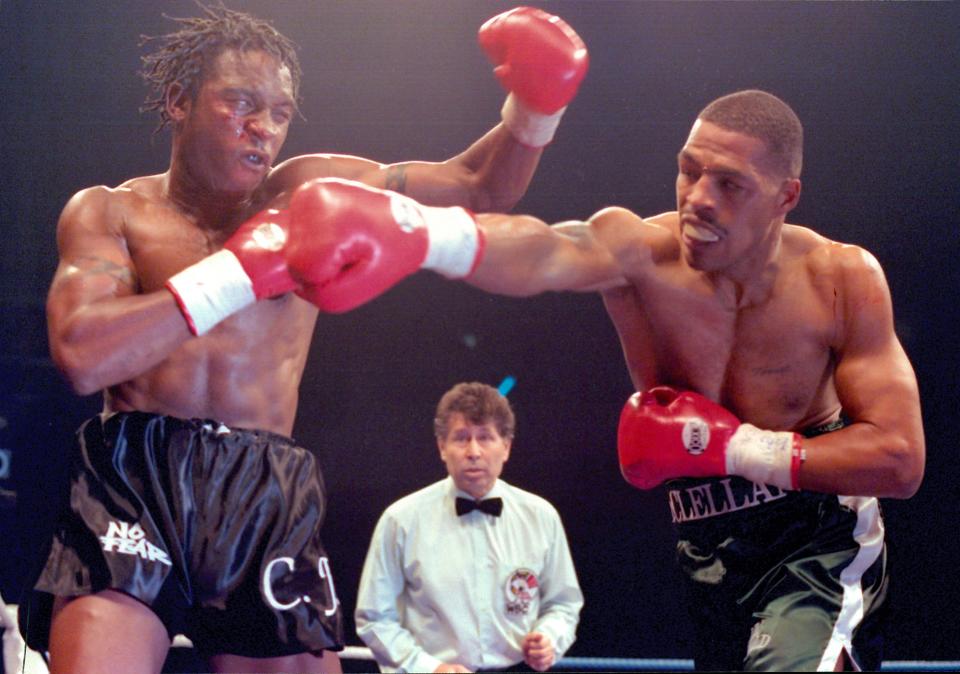Paulie Malignaggi underscores important differences between MMA and boxing

Former junior welterweight and welterweight boxing world champion Paulie Malignaggi (36-8) is returning to action soon in a so-called “bare-knuckle” boxing contest against former UFC fighter Artem Lobov (13-15). Given both men’s outspoken natures and the roots of their feud reaching back several years to Malignaggi’s own bad blood with Lobov teammate Conor McGregor, things are getting heated in the lead-up to the matchup.
In the midst of the nonsense, however, Malignaggi recently expanded on a controversial statement he made saying he hoped to put Lobov in a coma. The New Yorker is the second elite boxer to have publicly expressed a desire recently to either kill or seriously maim an opponent.
Depending on your perspective, comments like Malignaggi’s and heavyweight champion Deontay Wilder’s can seem cruel, or a frank understanding on their part of what, precisely, it is that their brutal profession involves, or both. In any case, boxing is undeniably dangerous — lethal, even.
In fact, boxing is statistically more dangerous than MMA when it comes to death and serious injuries like those sustained to the head and neck. Malignaggi knows this, and broke down some crucial differences between boxing and MMA that help explain why pugilism is about as dangerous as it gets, even in comparison to mixed martial arts.
“Lobov and the mixed martial arts community have really disrespected my sport in a lot of ways, boxing. Saying we fight with pads on and it is not a real fighting sport and whatnot,” he told FightHype, explaining what was behind his desire to maim Lobov as punishment.
“We have all the deaths. We have more of the deaths by a long shot. We have more of the permanent damage, by a long shot. And this is not to say that you diminish the danger of mixed martial arts or any other combat sport but there is a reason why boxing has more deaths, more traumatic brain injuries ... because we are the most dangerous combat sport.”
Malignaggi’s exposition was certainly charged and defensive, but still no less fundamentally accurate. Conventional wisdom among those who are not intimately familiar with both boxing and MMA might be that MMA is more dangerous because of its many different weapons (kicks, submission holds, elbows, knees, slams, etc.) compared to boxing’s fists.
In fact, the diversity of maneuvers available to MMA athletes actually help make the sport safer. There’s a lot more than punching and getting punched in MMA, and in those moments (especially in the grappling clinches on the feet and on the ground that are allowed to go much on longer than in boxing) one’s brain can find temporary respite. Malignaggi focused on an often-overlooked component of what makes MMA safer than boxing — it’s culture.
In MMA, it is perfectly acceptable to “tap out,” or submit. In short, MMA fighters quit all the time during competition.
They are expected to. In contrast, even some of the best boxers of all time, the most gutsy, skilled, and accomplished ones, suffer under a culture that looks down on quitting in a fight as perhaps the sport’s ultimate taboo.
“I don’t care how many 360 roundhouse kicks you can do, at the end of the day, you just have to do this [taps hand] and it’s over, you know what I’m saying?” he continued.
Culture and ideology determine what is accepted and what is not, in any community. Objectively, Malignaggi is correct that mixed martial arts’ culture is much more accepting of giving up in a fight.
This likely comes from the sport’s base art — Brazilian jiu-jitsu. The prevalence of submission holds made for the common-sense acceptance of submission to those locks and chokes. In jiu-jitsu gyms and in MMA gyms on the mat, all fighters usually “tap out” multiple times in each practice, and most of them take that sensibility into fights.
If someone has your number, you signal submission, cut your losses, and try to live to fight another day. That’s not the case in boxing, Malignaggi correctly pointed out.
“In boxing, if you sit on your stool, you’ll never live it down the rest of your career,” Malignaggi said. “Amir Khan was known as having a lot of heart his whole career, he fought his ass off his whole career. But he quits one time against Terence Crawford and people forget all about that. That’s how disheartening this can be, that’s how frustrating this sport can be. In MMA, Mr. Tap Machine, Conor [McGregor], he does it in every fight. He’s done it, what, three out of his last four fights? All you have to do is this [taps with hand]. He’s not ‘Notorious’ McGregor, he’s ‘Tap-out’ McGregor. But at the end of the day, he’s still the biggest, there. It’s more [accepted] to save your life [in MMA].”

“In boxing, if you want to save your life, I remember Gerald McClellan got criticized for staying on one knee,” Malignaggi said. “I remember Ferdie Pacheco criticizing him when he stayed on one knee and took the 10-count against Nigel Benn, meanwhile we saw the issues Gerald lives with to this day, for saving his life. Because if he would have got up and he took more punches he probably wouldn’t be alive today. [He was] saving his life and the condition he had to remain in.”
Malignaggi exaggerated McGregor’s own recent record (the Irishman has been submitted in two of his last four fights, not three), but his larger point stands.
McClellan seemingly astounded the boxing world in the moment when he could not get back to his feet and was counted out. Many, including Pacheco, who was commentating ringside, expressed shock at what they were seeing, evidently assuming that McClellan was somehow consciously choosing to not continue fighting.
The implication of such a choice was a lack of gameness or courage, because of boxing’s culture. Not until later, after emergency brain surgery and a near-death experience that left McClellan permanently disabled, did the boxing community at-large seem to consider the most obvious — that McClellan was so badly injured to the brain that he could not and should not have continued, or been expected to.
Pacheco’s own blindness to this is particularly revealing of the power of boxing’s ideology because he was a medical doctor. Despite his medical training and decades of practicing medicine, Pacheco couldn’t understand how it made sense that a fighter could sustain debilitating damage from a fight and have trouble standing.
“Gotta get up,” he said, at the time. “Now, that is the strangest knockdown I’ve seen.”
It wasn’t that strange at all. McClellan had been hit, hard, a lot of times. Brains are not supposed to be able to withstand that amount of damage without consequence.
Pacheco, the doctor but also longtime boxing trainer, could not fathom that in the moment, however. In MMA, no one is at a loss when a fighter submits and decides to end their night due to being in an overly compromised position, or after having sustained a great deal of damage.
“In MMA, they praise these guys,” Malignaggi continued.
“This guy is over there [McGregor], is selling whiskey and people are buying it. In boxing, if this guy quit as much as this guy quit, and he tried to make a product, they’d kick him in his ass, you know what I’m saying? They’d say, get the [expletive] out of here with your bum product. In MMA, they actually praise it. You quit and they praise it.”
As strange as that sounds — the praising of tactically quitting — he’s right. Sometimes we do.
We certainly marvel at those fighters in MMA who do not tap, even when they’re caught, for example, in a joint lock, or submission, or underneath a barrage of punches on the ground (another important difference between boxing and MMA is that referees typically stop fights much faster in MMA than they do in boxing). We also often compliment those wise enough to tap out, however.
There’s a bunch of silliness and negativity going on with the build-up of Malignaggi’s fight with Lobov, to be sure. That the fight is happening at all is problematic in many ways. (Why, exactly, are we alright with an aging and retired former boxing champ being carted into the ring again to fight a journeyman MMA fighter in a sport that neither has competed in?)
Malignaggi’s attempt to get the world to understand that boxing is, in fact, more lethal than MMA to its participants is illuminating, however — and stands apart from the frivolous stuff. It’s not the type of argument that anyone should relish winning, but any opportunity to better understand the risks athletes take to entertain us should be noted by thankful fans.
More from Yahoo Sports:
